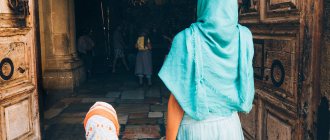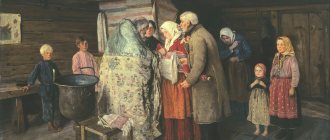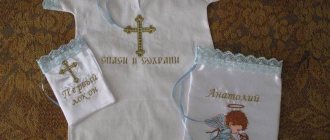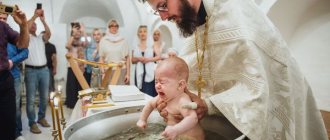Culture, art and communication
Photo: Unsplash
Organ concerts, which often take place in Catholic churches, are usually free. But it is important to always turn off the sound on your mobile phone! When entering a concert, you do not need to cross yourself - just a slight bow of the head. Well, if you want to take photographs in a Catholic church, then find out in advance whether it is possible to do this in a particular cathedral; the Internet can help. All questions about the temple can be asked to the ministers, but to talk with the priest, you must wait until the service is over.
Photo: Unsplash
Rules for visiting the synagogue
The center of religious and social life of the Jewish community is the synagogue.
Currently, various currents coexist in Judaism - from ultra-Orthodox to ultra-liberal. Accordingly, synagogue services in different Jewish communities can vary significantly. The ancient traditions are most preserved in Orthodox Judaism.
Services in Orthodox synagogues are usually held three times a day; On holidays and Saturdays, additional prayers are read. For worship to take place, at least ten men over 13 years of age must be present to form a minyan (quorum).
The seats for women in the synagogue are either separated from the seats for men by a partition, or women occupy seats in the gallery.
Men are forbidden to be in the synagogue with their heads uncovered, so during morning prayer they wear a special prayer shawl (tallit), which is a rectangular piece of woolen material with four tassels at the corners (tzitzit). On weekdays, during morning prayer, men put on tefillin - leather boxes with pieces of parchment with passages of Holy Scripture enclosed in them. With the help of long straps, these boxes are tied to the forehead and left hand of the worshipers.
Prayers are said standing or sitting: those praying are not allowed to prostrate or kneel, with the exception of certain moments of festive services.
When entering the synagogue and reading some prayers, it is customary to bow your head. Prayers are recited in Hebrew, and a number of prayers are recited in Aramite (Aramaic), the language of everyday communication of the ancient Jews.
The order of worship developed over the centuries involves the recitation of certain prayers, the sequence of which corresponds to one or another day of the religious calendar. Any adult Jewish male can lead a service. In large communities, a particularly revered person (khazzan) is usually appointed to read prayers on holidays and Saturdays, sometimes accompanied by a male choir. Some parts of the liturgy are sung by everyone present in the synagogue.
In many communities belonging to other branches of Judaism - Conservative, Reform, Liberal - synagogue traditions can differ significantly. Thus, in reform communities, men and women sit together. Men may not wear a tallit or tefillin, although they often wear a special cap (kippah) on their heads. The synagogue choir in Reform and many Conservative synagogues includes women. In many countries, part of the service may be conducted in the language of that country, and the ratio of prayers in Hebrew to prayers in another language varies among different communities. The very composition of prayers in the services of various communities is also changing.
Rabbis still lead Jewish communities today, although much of their leadership is in the nature of spiritual mentoring. The responsibilities of rabbis include organizing solemn religious ceremonies - marriages, funerals, etc.
The functions and position of the rabbinate may differ in different countries of the world. Thus, in Israel, rabbis are government officials. They are confirmed in office by the chief rabbis and the Ministry of Religious Affairs and take on some of the important government and judicial functions.
Unlike other religions, where there are certain rules of etiquette in dealing with clergy of various ranks, in Judaism as a whole there are no such rules. The only thing is that when addressing a rabbi by name, the word “rabbi” is sometimes added.
Advertising
Mass
Yes, Orthodox Christians can go to Catholic Mass and pray in a Catholic church, but under no circumstances should they confess. The Catholic cathedral has a slightly different structure: there is no iconostasis, there is a presbyterium, something like an altar, where the Holy Gifts are kept, and a lamp burns in front of them. It is strictly forbidden to go behind the presbyterium! Catholics always bow when passing by him, Orthodox Christians can too. But don't walk around the church during Mass! Do not stand on the kneeling bar, which is on every bench, with shoes on - this is where you kneel.
Photo: Unsplash
The Holy Gifts are sometimes brought to the altar table for veneration - do not walk around the temple at this time either! And during Mass there is no need to be baptized, this distracts people from prayer. Catholics say to each other “Peace be with you!”, shake hands or bow - if you are addressed in this way, it is important to give an appropriate response. And if you don’t want to pray, then you shouldn’t sit next to those who are praying at Mass! Better sit on the farthest bench.
Photo: Unsplash
How to behave correctly in an Orthodox church
As a rule, Orthodox churches have three entrances: the main (western, opposite the altar), northern and southern. The entire church building is divided into the altar, the temple itself and the vestibule. The altar is separated from the temple itself by an iconostasis, which in most cases reaches the ceiling. The altar contains the throne and the altar. The Royal Doors (central), as well as the northern and southern doors lead to the altar.
Women are prohibited from entering the altar. Men can enter the altar only with the permission of the priests, and then only through the northern or southern doors. Only clergy enter the altar through the Royal Doors.
Directly adjacent to the iconostasis is the solea - an elevated platform along the entire altar. Opposite the royal doors is the ambo - the central part of the solea. Without the permission of the clergy, it is also not allowed to ascend to the pulpit and solea.
Since ancient times, it has been established to perform divine services three times a day: in the evening, in the morning and in the afternoon - the liturgy. You should know that the church day begins not at 0 o'clock on the calendar day, but at 18 o'clock on the previous day.
The entrance to the temple from the street is usually arranged in the form of a porch - a platform in front of the entrance doors, to which several steps lead. When approaching the temple, you need to make the sign of the cross and bow from the waist. When going up to the porch, before entering the doors, you again need to sign yourself with the sign of the cross. You should not pray for a long time and for show while standing on the street.
You should arrive at the temple 10-15 minutes before the start of the service. During this time, you can submit notes, put a donation on the eve, buy candles, put them on and venerate the icons. If you are late, you must behave in such a way as not to disturb the prayer of others. If it is not possible to freely approach the icons and light candles, ask them to pass the candles through other people.
During the service, men should stand on the right side of the temple, women on the left, leaving a clear passage from the main doors to the Royal Doors. It is forbidden to sit in an Orthodox church, the only exception being the parishioner’s ill health or severe fatigue.
In a temple, it is indecent to show curiosity and look at others. It is unacceptable to condemn and ridicule the involuntary mistakes of employees or those present in the temple. It is forbidden to talk during the service. One should not condemn or reprimand a newcomer who does not know the church rules. It is better to help him with polite and kind advice. Candles should only be purchased from the temple you came to. If possible, you should not leave the temple until the end of the service.
When visiting temples, you are supposed to dress so that most of your body is covered. It is not customary to go to church in shorts and sportswear. Whenever possible, men and women should also avoid T-shirts and short-sleeved shirts. A woman's head must be covered. Men are required to remove their hats before entering the temple.
In an informal setting, clergy are usually called as follows:
- Patriarcha - His Holiness;
- bishop - lord;
- priest - father;
- abbess - mother;
- deacon - father deacon.
It is not customary at meetings to greet clergy with exclamations: “Hello, father!” or “Hello, master!” You should say: “Father, bless!” or “Master, bless!”
You should not ask for blessings from deacons and ordinary monks, since they do not have the right to do this. Priests and bishops, as well as abbess of monasteries in the rank of abbess, bless. When accepting a blessing, you should fold your palms crosswise (right palm on top of the left) and kiss the right, blessing hand of the clergyman; there is no need to cross yourself before doing this.
Exit from the temple
Here Catholics always approach a vessel with holy water, dip their fingers into it and cross themselves - this is a symbol of received baptism as such. So don’t stay late unless you plan to do so so as not to disturb anyone! Even to photograph the cathedral on the way out, you will simply disturb people.
And a Catholic monastery in the USA, by the way, demands in the meantime to introduce a road sign “Caution, nun!” And this is even common sense. In fact, it would be worthwhile for some ill-mannered tourists to hang “Beware of religion!” signs on cathedrals. Because otherwise the desecration of the temple begins simply out of stupidity and ignorance...
Orthodox or Catholic church, synagogue or mosque - how to behave, religious etiquette
Each religion has its own norms and rules of conduct. The general norms of behavior in all temples are only the following: do not smoke, do not drink alcohol, do not make noise and behave respectfully. All other rules are very different.
Each religion has its own norms and rules of conduct. The general norms of behavior in all temples are only the following: do not smoke, do not drink alcohol, do not make noise and behave respectfully. All other rules are very different.
Orthodox church
As a rule, Orthodox churches have three entrances: the main (western, opposite the altar), northern and southern. The entire church building is divided into the altar, the temple itself and the vestibule. The altar is separated from the temple itself by an iconostasis, which in most cases reaches the ceiling. The altar contains the throne and the altar. The Royal Doors (central), as well as the northern and southern doors lead to the altar.
Women are prohibited from entering the altar. Men can enter the altar only with the permission of the priests , and then only through the northern or southern doors. Only clergy enter the altar through the Royal Doors.
Directly adjacent to the iconostasis is the solea - an elevated platform along the entire altar. Opposite the royal doors is the ambo - the central part of the solea. Without the permission of the clergy, it is also not allowed to ascend to the pulpit and solea.
Since ancient times, it has been established to perform divine services three times a day: in the evening, in the morning and in the afternoon - the liturgy. You should know that the church day begins not at 0 o'clock on the calendar day, but at 18 o'clock on the previous day.
The entrance to the temple from the street is usually arranged in the form of a porch - a platform in front of the entrance doors, to which several steps lead. When approaching the temple, you need to make the sign of the cross and bow from the waist. When going up to the porch, before entering the doors, you again need to sign yourself with the sign of the cross. You should not pray for a long time and for show while standing on the street.
You should arrive at the temple 10-15 minutes before the start of the service. During this time, you can submit notes, put a donation on the eve, buy candles, put them on and venerate the icons. If you are late, you must behave in such a way as not to disturb the prayer of others. If it is not possible to freely approach the icons and light candles, ask them to pass the candles through other people.
During the service, men should stand on the right side of the temple, women on the left, leaving a clear passage from the main doors to the Royal Doors. It is forbidden to sit in an Orthodox church, the only exception being the parishioner’s ill health or severe fatigue.
In a temple, it is indecent to show curiosity and look at others. It is unacceptable to condemn and ridicule the involuntary mistakes of employees or those present in the temple. It is forbidden to talk during the service. One should not condemn or reprimand a newcomer who does not know the church rules. It is better to help him with polite and kind advice. Candles should only be purchased from the temple you came to. If possible, you should not leave the temple until the end of the service.
When visiting temples, you are supposed to dress so that most of your body is covered. It is not customary to go to church in shorts and sportswear. Whenever possible, men and women should also avoid T-shirts and short-sleeved shirts. A woman's head must be covered. Men are required to remove their hats before entering the temple.
In an informal setting, clergy are usually called as follows:
- Patriarcha - His Holiness;
- bishop - lord;
- priest - father;
- abbess - mother;
- deacon - father deacon.
It is not customary at meetings to greet clergy with exclamations: “Hello, father!” or “Hello, master!” You should say: “Father, bless!” or “Master, bless!”
You should not ask for blessings from deacons and ordinary monks, since they do not have the right to do this. Priests and bishops, as well as abbess of monasteries in the rank of abbess, bless. When accepting a blessing, you should fold your palms crosswise (right palm on top of the left) and kiss the right, blessing hand of the clergyman; there is no need to cross yourself before doing this.
Catholic Church
A Catholic church has generally the same structure as an Orthodox church. The most significant difference that catches your eye is the absence of an iconostasis. Instead, there is a low altar barrier. The temple has a central part - the altar, or presbytery - the place where worship takes place and where the Holy Gifts - bread and wine transubstantiated into the Body and Blood of Christ - are kept. You can recognize this place by the unquenchable lamp burning in front of the tabernacle.
More on the blog: 12 beliefs that make living easier
In addition to the central altar, there may be side chapels in honor of saints. The church also has a special place for the choir and a sacristy (a separate room for church servants and storage of liturgical vestments and objects).
Men must remove their hats when entering the temple. Headscarves are not required for women. There are also no special standards in clothing or use of cosmetics. Appearing in the temple in shorts or too revealing clothing is not welcome, and in some temples, including St. Peter's Basilica in the Vatican, it is prohibited.
At the entrance to the temple there is a vessel with consecrated water, or a crypt, into which the fingers of the right hand are dipped and then crossed.
Immediately upon entering the temple, kneeling (right knee) is performed before the tabernacle. And subsequently, passing by the tabernacle, they kneel or at least bow their heads. Catholics are baptized in a different order from Orthodox Christians - first the left shoulder, then the right. There are no special moments outside the liturgy when the sign of the cross is required.
In the temple there are rows of prayer benches, and at the bottom there are low benches (people kneel on them during worship). Confession in a Catholic church is performed in special confessionals - small booths for the priest and the confessor.
If someone is talking in the confessional, you should not be within earshot, nor should you approach the priest during his conversation with someone - this can be a purely spiritual and personal conversation. One should not interrupt the prayer or silent contemplation of believers; one should wait until they finish.
Actually, this limits the basic rules of conduct in a Catholic church.
The head of the Catholic Church is the Pope.
Appeals to clergy:
- to the Pope - Your Holiness;
- to the cardinal and archbishop - Your Eminence;
- to the bishop - Your Eminence (personal - Vladyka).
For persons belonging to the highest church hierarchy, the title “Monsignor” is also used, added to the title. The rector of the temple is addressed as “Your Reverence.” In a personal conversation, you can address all priests as “father,” monks as “brother,” and nuns as “sister.”
It is very difficult to distinguish one rank from another in everyday life, therefore, when preparing for a meeting with a priest, you need to know his title in advance. However, the presence of a red belt, piuska (a red bishop's cap or a non-black cassock), as a rule, indicates belonging to the highest hierarchy. True, in everyday life the priesthood wears ordinary dark suits with dark shirts and a white stripe under the collar.
In communication with the priesthood, two levels must be distinguished - the one when during a meeting the priest is called to perform a divine service or sacrament, and the usual conversation. The conversation is subject to the rules of normal etiquette.
The Catholic priesthood takes a vow of celibacy, so it is tactless to be interested in the family life of your interlocutor. Another feature is that, as a rule, the priest is the first to offer his hand, including to women.
Synagogue
The center of religious and social life of the Jewish community is the synagogue.
Currently, various currents coexist in Judaism - from ultra-Orthodox to ultra-liberal. Accordingly, synagogue services in different Jewish communities can vary significantly. The ancient traditions are most preserved in Orthodox Judaism.
Services in Orthodox synagogues are usually held three times a day; On holidays and Saturdays, additional prayers are read. For worship to take place, at least ten men over 13 years of age must be present to form a minyan (quorum).
The seats for women in the synagogue are either separated from the seats for men by a partition, or women occupy seats in the gallery.
Men are forbidden to be in the synagogue with their heads uncovered , so during morning prayer they wear a special prayer shawl (tallit), which is a rectangular piece of woolen material with four tassels at the corners (tzitzit).
On weekdays, during morning prayer, men put on tefillin - leather boxes with pieces of parchment with passages of Holy Scripture enclosed in them. With the help of long straps, these boxes are tied to the forehead and left hand of the worshipers.
Prayers are said standing or sitting: those praying are not allowed to prostrate or kneel, with the exception of certain moments of festive services.
When entering the synagogue and reading some prayers, it is customary to bow your head. Prayers are recited in Hebrew, and a number of prayers are recited in Aramite (Aramaic), the language of everyday communication of the ancient Jews.
More on the blog: Situations that say a lot about a person
The order of worship developed over the centuries involves the recitation of certain prayers, the sequence of which corresponds to one or another day of the religious calendar. Any adult Jewish male can lead a service. In large communities, a particularly revered person (khazzan) is usually appointed to read prayers on holidays and Saturdays, sometimes accompanied by a male choir. Some parts of the liturgy are sung by everyone present in the synagogue.
In many communities belonging to other branches of Judaism - Conservative, Reform, Liberal - synagogue traditions can differ significantly. Thus, in reform communities, men and women sit together. Men may not wear a tallit or tefillin, although they often wear a special cap (kippah) on their heads.
The synagogue choir in Reform and many Conservative synagogues includes women. In many countries, part of the service may be conducted in the language of that country, and the ratio of prayers in Hebrew to prayers in another language varies among different communities. The very composition of prayers in the services of various communities is also changing.
Rabbis still lead Jewish communities today, although much of their leadership is in the nature of spiritual mentoring. The responsibilities of rabbis include organizing solemn religious ceremonies - marriages, funerals, etc.
The functions and position of the rabbinate may differ in different countries of the world. Thus, in Israel, rabbis are government officials. They are confirmed in office by the chief rabbis and the Ministry of Religious Affairs and take on some of the important government and judicial functions.
Unlike other religions, where there are certain rules of etiquette in dealing with clergy of various ranks, in Judaism as a whole there are no such rules. The only thing is that when addressing a rabbi by name, the word “rabbi” is sometimes added.
Mosque
A mosque is a place of worship for Muslims. It is not a holy place, a temple in the full sense of the word. The only exception is Masjid al-Haram - the “forbidden mosque”, which is located in Mecca. In the center of Masjid al-Haram stands the Kaaba, the main shrine of Muslims.
The mosque organizes various holidays, not necessarily religious ones, performances by Islamic figures, Koran recitation competitions, etc. In addition, visitors can always spend the night in the mosque.
Five times a day, at a strictly defined time, the azan is heard from the minaret - the call to prayer. The muezzin proclaims it. Inside the mosque, the direction of prayer is determined by the mihrab - a special niche in the wall facing Mecca. To the right of the mihrab in the cathedral mosque there is a minbar - a platform for the preacher.
Women usually pray on the second floor or in a partitioned off part of the first floor. The entrance to the mosque for men and women can be either common or separate. Although the mosque is not a holy place, certain rules are honored that apply to anyone who comes to the mosque, regardless of religion.
The appearance of a visitor to a mosque should not offend the eyes of believers: he should wear clean, modest and fairly covered clothing. For women, clothing should cover the entire body, with the exception of the face, hands and feet, its color should not be provocatively bright, and its silhouette should be tight-fitting. Women should completely hide their hair under a headscarf.
The floor of the mosque is covered with carpets, shoes are left at the entrance. In large mosques, special employees accept shoes and issue a token. Visitors to the mosque behave very relaxed: they sit or lie on the floor, eat, sleep, and communicate with each other. But at the same time, at any time someone can perform namaz, that is, pray. Believers read the Koran or simply focus on the thought of the Almighty. Therefore, you should not raise your voice, laugh, scold, etc.
When the time for prayer comes, believers perform ablution (wudu) and line up behind the imam, the leader of the prayer. Those who for some reason do not take part in collective prayer are not required to leave the mosque.
Since there is no institution of priesthood in Islam, the appeal to clergy is determined by the specific practice that has developed in a given region. The most universal is the address “side” (in Arabic “master”), as well as “haji”, that is, one who has performed the Hajj. But these appeals are not the exclusive prerogative of clergy.
Author: Maria Borisovna Kanovskaya, business etiquette consultant.
Source
Read us in a convenient Telegram | Facebook | Instagram | Tags
General rules
First of all, you need to keep in mind that a Catholic church is a Christian church and, accordingly, the same behavioral norms are appropriate here as in Orthodoxy: modesty in clothing, decent behavior.
In the Catholic Church there are no serious requirements for the appearance of parishioners: only men are required to remove their hats, while women can be dressed in any way they like, but modestly.
Catholic churches often host organ music concerts, which are also open to everyone. When entering, it is not customary to cross yourself - a slight bow of the head is enough, and you must turn off the sound of your mobile phone.
If you want to take photographs, it is better to find out in advance whether this can be done and when.
You can also buy candles in many temples. In Europe, they are sometimes replaced with electric ones, which are turned on for a small donation.
You can place the sign of the cross in a Catholic church according to Orthodox custom - from right to left.
If you want to talk to a priest, you need to wait until the end of the service, find out in advance how to address him and, if he is busy talking, wait aside.
Any question regarding the temple can be asked to the minister of the church shop or parishioners (but it is important not to interfere with their prayer).









